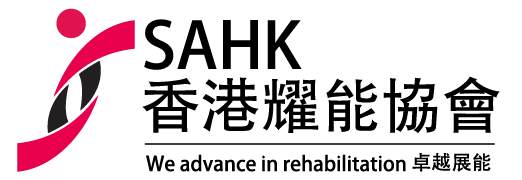Conductive Education
The Role of Conductive Education in the Schools for the Physically Handicapped
Schooling was the first of all the various kinds of service offered to spastics and other physically handicapped persons by the Spastics Association of Hong Kong- or as it was known at the time, some 33 years ago: The Spastic Children's Association of Hong Kong. As other special schools in Hong Kong, in the first instance we adopted the normal school model, including the physical environment, organization structure, curriculum and mode of operation in delivering the services. But from the very beginning we have been forced by the experience of working with handicapped pupils to adapt all aspects of the services to the special needs of the children. More, we have been working towards a tailor-made model, for the schools as well as for the other services for the different age groups to which we offer services. We think we are now within sight of offering such a model for the schools.
During these years of trials and experiments for a school model for the spastic and other physically handicapped pupils we discovered that we lacked a set of governing principles which can address the special needs of our pupils and help to guide all our work towards a holistic model of education.
A set of governing principles is important because it reflects our basic belief and values in our services. It gives us the back bone on which we can design and arrange all the different elements of our schools, including the physical settings, the administrative structure, the staffing and team work arrangements, the curriculum and the daily routine etc. It gathers all these elements together into one coherent system. It is particularly important to curriculum development as it governs the content and emphasis of the curriculum. It gives a direction in the design of different curriculum arrangements such as time-table arrangements, groupings of students etc. It provides a common philosophy for the staff and helps our communication with the parents. It gives our schools a concrete identity and image.
Since the early 1980s, we began to adopt the principles of Conductive Education in our rehabilitation programmes in general and education programmes in particular. The first important task was to experiment and adapt Conductive Education to the local socio-cultural situation. We were of course in the fortunate situation that from early days the need for a multifaceted approach had been recognized and the schools had been staffed with both teachers, therapists and other specialised and not-so specialized personnel.
To-day we are glad to see that through the concerted efforts of the staff members of the many and varied kinds, a Hong Kong model of education built on the principles of Conductive Education has gradually developed, fitting well into the Hong Kong service environment. In some of the classes in all our three schools, the principles of Conductive Education have been adopted and adapted in the local manner with good results for the children.
Now it appears that we have arrived at a critical point of the school development, which demands a strategic decision, whether we should merge the principles of Conductive Education into the entire school system and thus establish a holistic model of education to guide the operation of our three schools, making a tailor-made school model for spastics and physically handicapped students.
In many ways it is not a difficult decision to make, rather an obvious one. The schools are schools for the neurologically impaired and physically handicapped.In recognition of the double mission of such schools they are equipped with specialist staff to take care of both the educational and the therapeutic needs of the children. We hold the belief that a human being is a unified whole, having a body and a mind which are inseparable in the living person. Conductive Education holds the same belief. It is a combined educational-therapeutic approach for the neurological impaired persons, integrating therapy and education of a motor disordered person into a holistic system and aims at the overall development of the personality of the impaired person. Thus it fits well with the mission of our schools and provides the needed governing principles.
Still, in making the decision to adopt a single set of principles, the question of HOW to do so still remains. Unlike the other services offered by the Association, special schools are governed by the Education Ordinance and the Code of Aid for Special Schools and have a unique system of operation. To merge the principles of Conductive Education and the entire school system therefore demands Creativity, Courage, Collaboration and Commitment. We need creativity. The existing school model, moulded after the pattern of the ordinary schools, are too restrictive to our students. We must be creative enough to image different arrangements which facilitate our students' educational activities.
We need courage, as we undertake the reform. We need to break with old habits, take initiatives and open up new views and outlooks, which may seem strange or even ridiculous to some people. So we need as adventurous a spirit as any entrepreneur. We need collaboration, as our pupils' problems are multifaceted and all must contribute in order for the changes to succeed. We need commitment, as the road to success is steep and difficult to traverse, but we must persist. We are not afraid that we may fail, but we are afraid of stagnating because we are afraid to fail.






